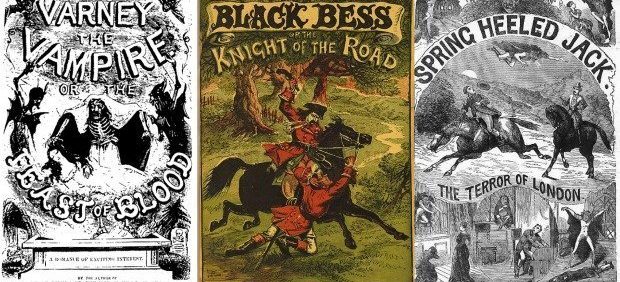Because I’m a nerd, and because I love sharing bits of random knowledge, I thought it’d be interesting to take a look far back at our earlier horror media.
In this case, the penny dreadful.
Let’s rewind to the UK in the 18th and early 19th centuries.
People took advantage of society’s interest in the macabre and target the audiences of public executions. They created and sold graphic illustrations alongside written accounts of the crimes, sometimes even detailing the trial and sentencing of the accused. (So, there were True Crime Girlies even back then!)
The penny serials themselves emerged in the 1830s as literacy rates among the working class grew. With transportation of goods and services expanding, it made it a lot easier to circulate large numbers of products—like books.
Thus began the penny serials. Printed on cheap wood pulp paper, they could be produced in bulk and distributed with significant ease. These stories encompassed a wide range of subjects featuring murderers, highwaymen, vampires, supernatural threats, and more. Many of these characters would appear in multiple serials spanning across several volumes—sometimes well over a hundred. Many of them were so popular, they became a rooted part of urban myth and future pop culture.
(Heard of Sweeney Todd? The Demon Barber of Fleet Street first appeared in a penny dreadful in the 1840s, originally titled The String of Pearls. This later turned into a melodrama in the early 1920s. More theatrical adaptations came out across the century, leading all the way up to a ballet version performed in 1959 and then Stephen Sondheim’s musical in 1979. And it all started with a small, cheap serial story.)
Eventually, the penny dreadfuls lost traction as other media edged them out of the spotlight. Alfred Harmsworth’s half-penny periodicals are sometimes attributed to being the primary killer of the penny dreadful.
These little stories still hold a special place in the hearts of a lot of horror enthusiasts, and thankfully, not all of them have been lost to time. You can find quite a collection online (just search “penny dreadful serial stories online”), or formally published in collections along with their original illustrations.
It’s an interesting thing to think about, how our horror landscape has evolved through the years, and yet in some ways has stayed exactly the same. I guess it goes to show that our society’s fascination with the macabre is no new thing.
That these were so popular in the Victorian era really isn’t surprising when you think about it, though. The Victorians had to have something to read when they weren’t busy eating mummies, after all.
(That’ll be a story for another time…)

